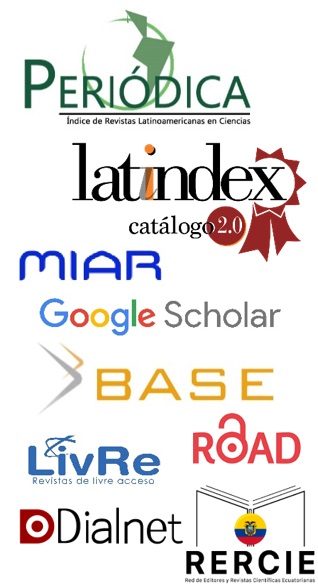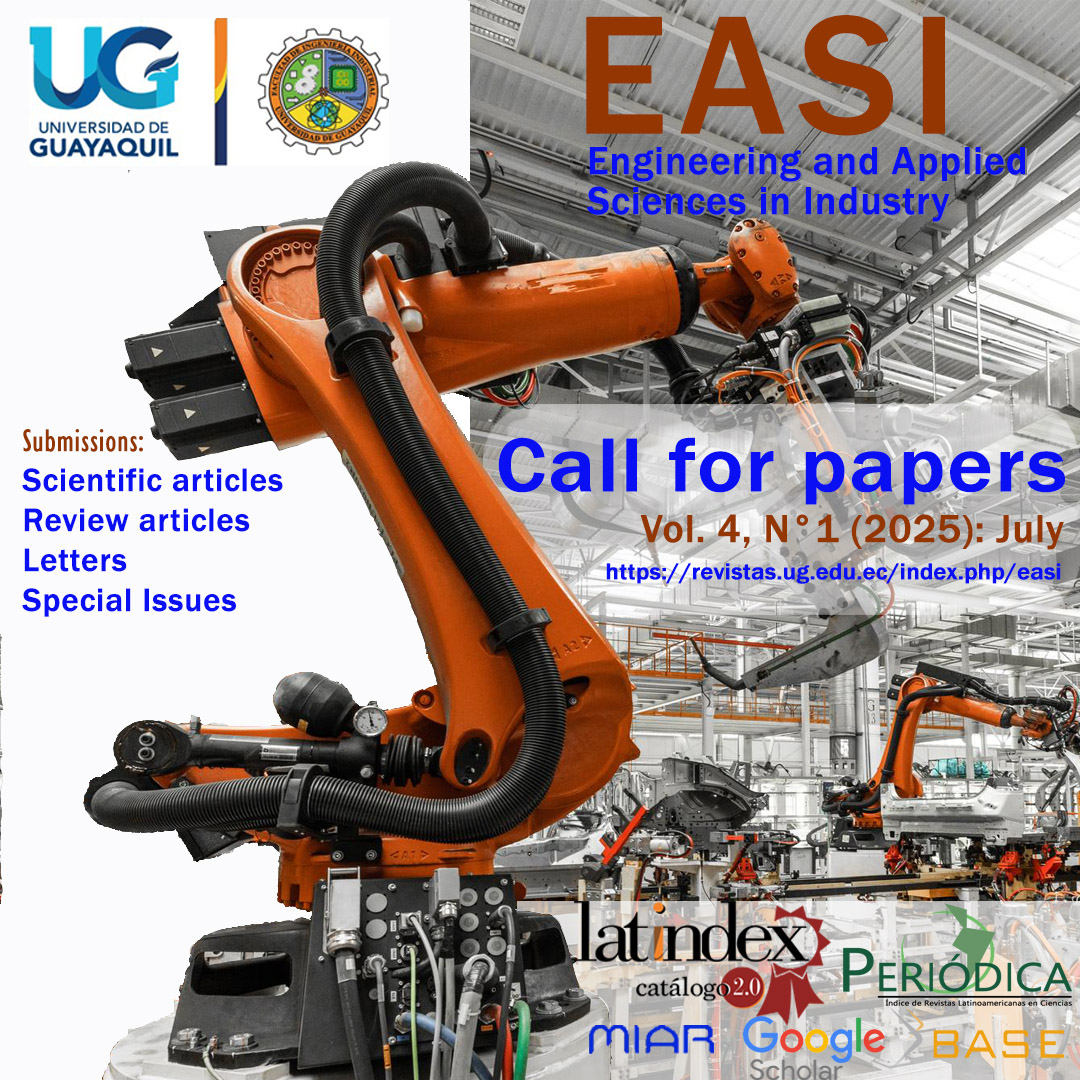ICT IN HUMAN RESOURCE MANAGEMENT
DOI:
https://doi.org/10.53591/easi.v1i1.1772Keywords:
Software design and architecture, ICT-based technologies, perceived benefits, perceived productivity, training, human resources.Abstract
Currently, technology strongly drives changes in Small and Medium Enterprises (SMEs), generating a great impact on human resources. This brief review evaluates the advantages and disadvantages of HR technology to support decision making and training in SMEs. In this work, the concepts and factors that lead the applications of ICT-based technologies in human resources for a successful business are determined, and how they can be applied to optimize workforce management and the decision-making process. The findings suggest that the perceived benefits of adopting ICT-based technologies are capturing the attention of more SMEs, even in developing countries such as Ecuador.
References
Amer, E. A. A. A., Meyad, E. M. A., Gao, Y., Niu, X., Chen, N., Xu, H., & Zhang, D. (2022). Exploring the link between natural resources, urbanization, human capital, and ecological footprint: A case of GCC countries. Ecological Indicators, 144. https://doi.org/10.1016/j.ecolind.2022.109556
Cachón-Rodríguez, G., Blanco-González, A., Prado-Román, C., & Feito, C. D.-C. (2022). How Sustainable Human Resources Management helps in the evaluation and planning of Employee Loyalty and Retention: Can Social Capital make a difference? Evaluation and Program Planning, 102171. https://doi.org/10.1016/j.evalprogplan.2022.102171
da Silva, L. B. P., Soltovski, R., Pontes, J., Treinta, F. T., Leitão, P., Mosconi, E., de Resende, L. M. M., & Yoshino, R. T. (2022). Human resources management 4.0: Literature review and trends. Computers and Industrial Engineering, 168. https://doi.org/10.1016/j.cie.2022.108111
Danvila-del-Valle, I., Estévez-Mendoza, C., & Lara, F. J. (2019). Human resources training: A bibliometric analysis. Journal of Business Research, 101, 627–636. https://doi.org/10.1016/j.jbusres.2019.02.026
Castillo-Feito, C., Blanco-González, A., & Hernández-Perlines, F. (2022). The impacts of socially responsible human resources management on organizational legitimacy. Technological Forecasting and Social Change, 174. https://doi.org/10.1016/j.techfore.2021.121274
Delecraz, S., Eltarr, L., Becuwe, M., Bouxin, H., Boutin, N., & Oullier, O. (2022). Responsible Artificial Intelligence in Human Resources Technology: An innovative inclusive and fair by design matching algorithm for job recruitment purposes. Journal of Responsible Technology, 11, 100041. https://doi.org/10.1016/j.jrt.2022.100041
Dialga, I., & Ouoba, Y. (2022). How do extractive resources affect human development? Evidence from a panel data analysis. Resources, Environment and Sustainability, 7. https://doi.org/10.1016/j.resenv.2022.100046
Firew, T., Gebreyesus, A., Woldeyohannes, L., Ebrahim, F., & Patel, S. (2020). Human resources for emergency care systems in Ethiopia: Challenges and triumphs. African Journal of Emergency Medicine, 10, S50–S55. https://doi.org/10.1016/j.afjem.2020.09.006
Fischer, G. S., Righi, R. da R., Ramos, G. de O., Costa, C. A. da, & Rodrigues, J. J. P. C. (2020). ElHealth: Using Internet of Things and data prediction for elastic management of human resources in smart hospitals. Engineering Applications of Artificial Intelligence, 87. https://doi.org/10.1016/j.engappai.2019.103285
Gu, X. S., & Zhang, Z. X. (2021). Analysis on Intelligent Management of Human Resources in Urban Community under Normalized Epidemic Prevention and Control. Procedia Computer Science, 199, 924–928. https://doi.org/10.1016/j.procs.2022.01.116
Haakenstad, A., Irvine, C. M. S., Knight, M., Bintz, C., Aravkin, A. Y., Zheng, P., Gupta, V., Abrigo, M. R. M., Abushouk, A. I., Adebayo, O. M., Agarwal, G., Alahdab, F., Al-Aly, Z., Alam, K., Alanzi, T. M., Alcalde-Rabanal, … Lozano, R. (2022). Measuring the availability of human resources for health and its relationship to universal health coverage for 204 countries and territories from 1990 to 2019: a systematic analysis for the Global Burden of Disease Study 2019. The Lancet, 399(10341), 2129–2154. https://doi.org/10.1016/S0140-6736(22)00532-3
Jatobá, M., Santos, J., Gutierriz, I., Moscon, D., Fernandes, P. O., & Teixeira, J. P. (2019). Evolution of Artificial Intelligence Research in Human Resources. Procedia Computer Science, 164, 137–142. https://doi.org/10.1016/j.procs.2019.12.165
Lambrechts, F., & Gnan, L. (2022). Human resources and mutual gains in family firms: New developments and possibilities on the horizon. Journal of Family Business Strategy, 13(2). https://doi.org/10.1016/j.jfbs.2022.100502
Lima, L., & Galleli, B. (2021). Human resources management and corporate governance: Integration perspectives and future directions. European Management Journal, 39(6), 731–744. https://doi.org/10.1016/j.emj.2021.02.004
Margherita, A. (2022). Human resources analytics: A systematization of research topics and directions for future research. Human Resource Management Review, 32(2). https://doi.org/10.1016/j.hrmr.2020.100795
Marin, G. D., & Nilă, C. (2021). Branding in social media. Using LinkedIn in personal brand communication: A study on communications/marketing and recruitment/human resources specialists’ perception. Social Sciences & Humanities Open, 4(1), 100174. https://doi.org/10.1016/j.ssaho.2021.100174
Ndione, F. B., Langevin, F., Diop, C. M., Leye, M. M. M., Kane, C., & Zalc, V. (2020). Quantification Methodology of “Health Human Resources” Related to “Health Technologies” Based on Indicators “RhSan”, “TechSan” and “RhTech”: Application to Senegal. IRBM, 41(6), 354–363. https://doi.org/10.1016/j.irbm.2019.12.005
Portero, R., Cueto, M., Fernández-Gómez, M. J., & Álvarez-Fernández, E. (2022). Surf and turf. Animal resources in the human diet in Cantabrian Spain during the Mesolithic (11.5 – 7.5 Ky cal. BP). Journal of Archaeological Science: Reports, 45. https://doi.org/10.1016/j.jasrep.2022.103635
Rahim, S., Murshed, M., Umarbeyli, S., Kirikkaleli, D., Ahmad, M., Tufail, M., & Wahab, S. (2021). Do natural resources abundance and human capital development promote economic growth? A study on the resource curse hypothesis in Next Eleven countries. Resources, Environment and Sustainability, 4. https://doi.org/10.1016/j.resenv.2021.100018
Rueda-Bayona, J. G., Cabello Eras, J. J., & Chaparro, T. R. (2022). Impacts generated by the materials used in offshore wind technology on Human Health, Natural Environment and Resources. Energy, 261. https://doi.org/10.1016/j.energy.2022.125223
Yu, H., Can, N., Wang, Y., Wang, S., Ogbeyemi, A., & Zhang, W. (2022). An Integrated Approach to Line Balancing for a Robotic Production System with the Unlimited Availability of Human Resources. IFAC-PapersOnLine, 55(10), 1098–1103. https://doi.org/10.1016/J.IFACOL.2022.09.536
Zhila, N., Mohammad, A., Kamran, S., Masoumeh, N. G., & Madineh, K. (2022). A comprehensive presentation of Iran’s human resources for health information systems: A mixed-method case study. Health Policy and Technology, 11(3). https://doi.org/10.1016/j.hlpt.2022.100637
Zhou, D. (2021). Role of green data center in human resources development model. Sustainable Computing: Informatics and Systems, 30. https://doi.org/10.1016/j.suscom.2020.100492
Zhou, R., Abbasi, K. R., Salem, S., Almulhim, A. I., & Alvarado, R. (2022). Do natural resources, economic growth, human capital, and urbanization affect the ecological footprint? A modified dynamic ARDL and KRLS approach. Resources Policy, 78. https://doi.org/10.1016/j.resourpol.2022.102782
Published
How to Cite
Issue
Section
License
Copyright (c) 2022 Josué Cruz Cruz, Aldo Parrales, Dennis Zambrano Silva

This work is licensed under a Creative Commons Attribution-NonCommercial-NoDerivatives 4.0 International License.
Contributions published in the EASI journal follow the open access license CC BY-NC-ND 4.0 (Creative Commons Attribution-NonCommercial-NoDerivs 4.0). This license empowers you as an author and ensures wide dissemination of your research while still protecting your rights.
For authors:
- Authors retain copyrights without restrictions according to CC BY-NC-ND 4.0 license.
- The journal obtains a license to publish the first original manuscript.
For readers/users:
Free access and distribution: Anyone can access, download, copy, print, and share the published article freely according to the license CC BY-NC-ND 4.0 terms.
Attribution required: If any third party use the published material, they must give credit to the creator by providing the name, article title, and journal name, ensuring the intellectual property of the author(s), and helping to build the scholarly reputation.
Non-commercial use: only noncommercial use of the published work is permitted. Noncommercial means not primarily intended for or directed towards commercial advantage or monetary compensation by any third party.
No modifications allowed: The content of the published article cannot be changed, remixed, or rebuilt upon the author’s work. This ensures the integrity and accuracy of the research findings.



